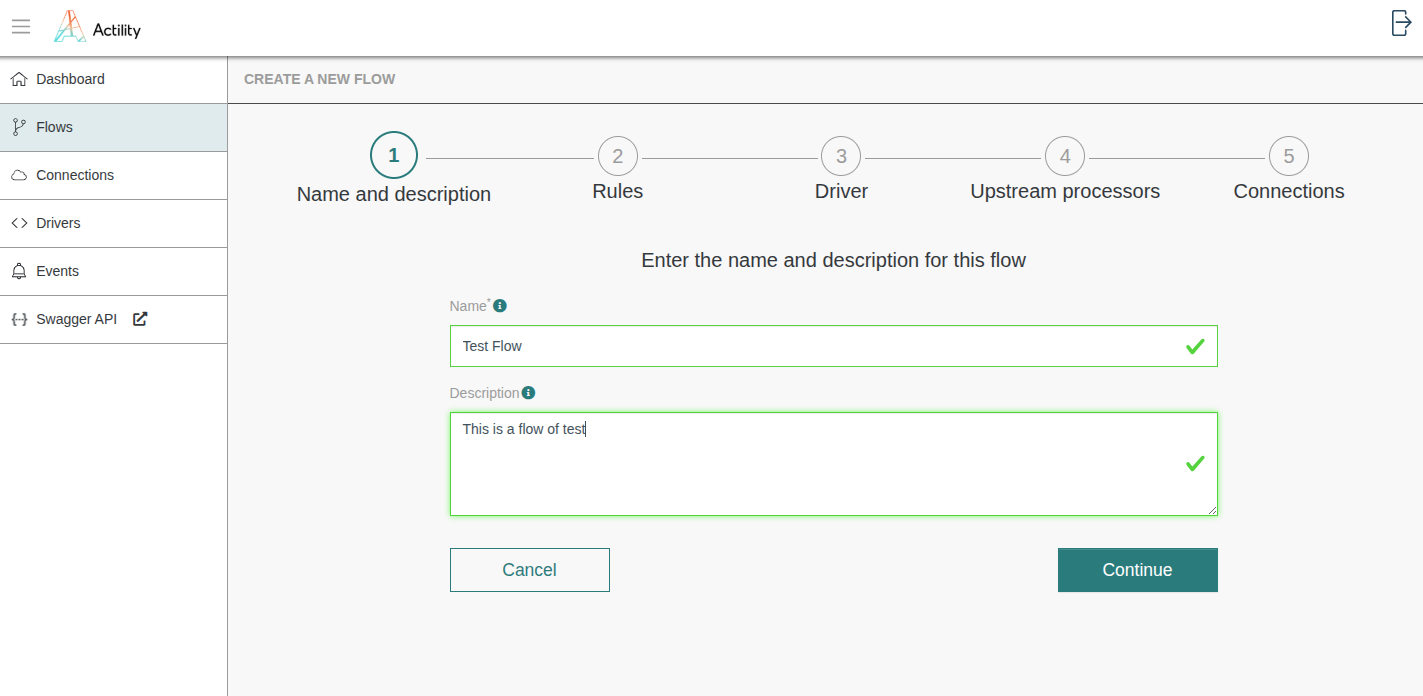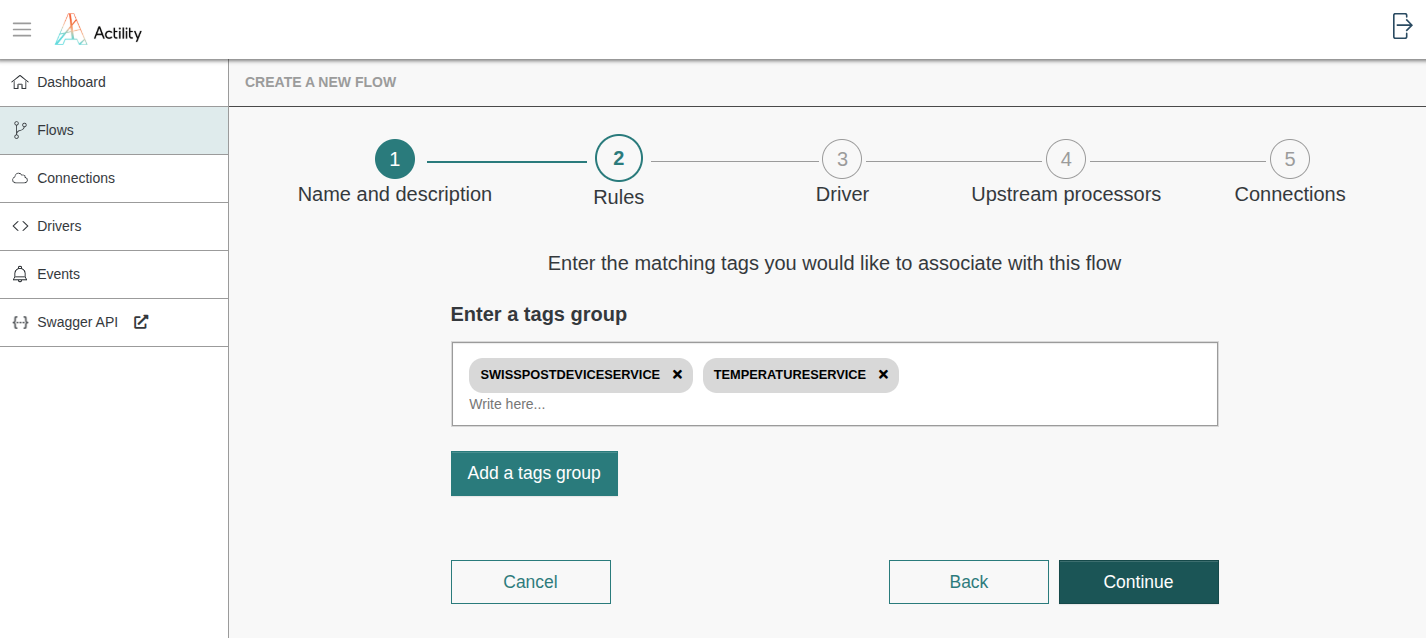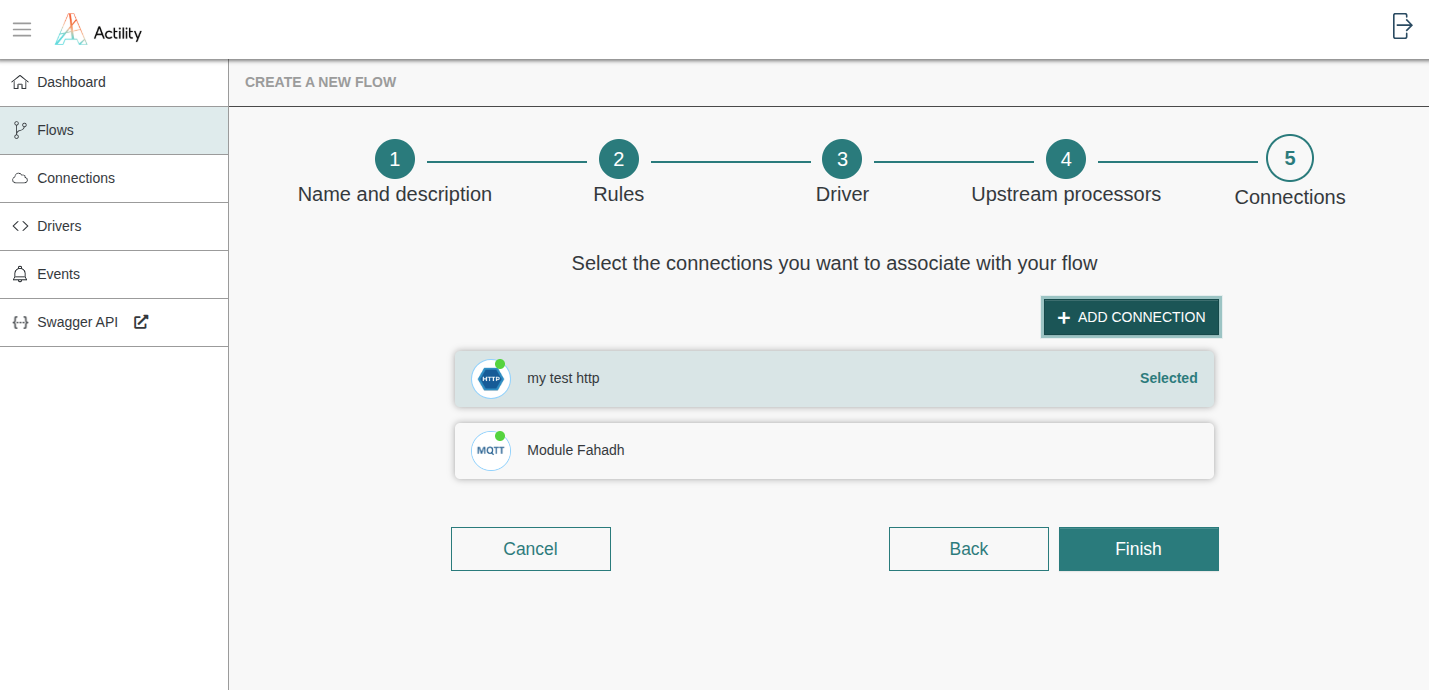Flow
Before creating a new IoT Flow instance, ensure that at least one connection resource is available. Follow the steps here to create a connection.
Create a New IoT Flow instance
Prerequisites
To create your new IoT Flow resource, fill in the following parameters:
- ID of the connector type (like
actility-aws-iot) - ID of the connection resource instance to be used with the new IoT Flow instance.
Optionally, you can specify a driver ID for encoding and decoding payloads.
To use drivers, set the id property within the driver object of the Flow configuration.
There are two options:
- If set to
actility:auto:1, IoT Flow will look for theDriverCfgfield within the message to perform encoding/decoding. IfDriverCfgis not present, no encoding/decoding is done. - Alternatively, specify a static driver ID to enforce the use of a specific driver. Driver IDs can be found in the
idfield ofdriverobjects.
If the driver ID is not set or does not exist in the system, encoding/decoding is disabled.
Steps
- From the Flows section, click on Add Flow.

- Add name and description.

- Add rules. Check here for more details of Tags and device keys


- Speficy the driver, or use the automatically detected driver for the upstream.

- Add connection

Flow Matcher
Matchers can be used to filter specific subsets of uplink messages. If your network generates thousands of uplink messages and you wish to forward only a specific subset to the cloud, define matcher filters that inspect tags associated to each uplink.
There are two types of matcher:
- Tags. It is a string associated to a device during the device configuration phase.
- DevEUI. It matches the exact device for the process.
For example, to send only uplink events with the tag "TemperatureService" to your IoT cloud platform:
-
Assign the tag "TemperatureService" to all devices whose uplinks should be selected by the matcher filter.
-
If a device contains all tags specified in the flow matcher, all its uplinks are sent to the associated cloud. A device can have additional tags beyond those in the matcher but must include at least all matcher tags.
Multiple matchers can be applied. Matchers use OR logic between them (matcher1 OR matcher2 OR ...), and within each matcher, AND logic is applied (e.g., tag1 AND tag2).

Ensure that the tags defined in the Flow match those set in ThingPark Wireless devices. Matching is case-insensitive.
In the following screenshot you can check that tag TemperatureService is set in the TPX IoT Flow matcher tags configuration panel of the Device, and matches exactly (case unsensitive) the one set in the matcher configuration on the right.
